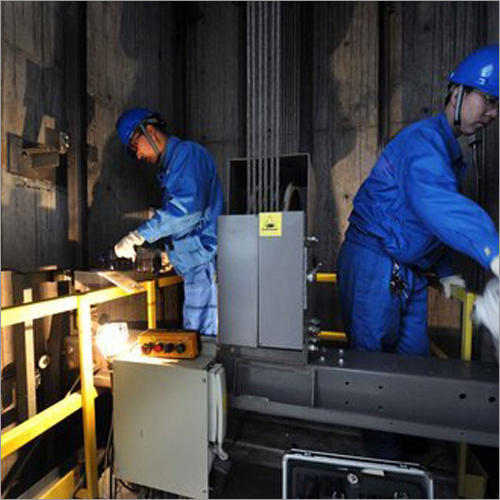A Comprehensive Method to Enhancing Performance Via Strategic Lift Fixing Techniques
A strategic and systematic strategy to lift repair work and upkeep is critical to optimize efficiency and reduce downtime. By dealing with common lift issues, executing proactive upkeep procedures, and establishing targeted repair work plans, facilities can optimize their lift systems to operate at peak efficiency levels.
Significance of Lift Performance Optimization
Recognizing the relevance of optimizing lift performance is essential for ensuring trustworthy and reliable vertical transport systems in different buildings and frameworks. Lifts are crucial elements of modern facilities, providing upright flexibility for residents and items within buildings of differing heights. By optimizing lift efficiency, structure owners and center supervisors can improve individual experience, boost energy performance, and rise general functional efficiency.
Reliable lift performance optimization entails different variables, including rate, ability, power safety and security, consumption, and upkeep demands. Effectively optimized lifts can decrease wait times for users, specifically in high-traffic structures, leading to enhanced contentment and performance. Additionally, optimized lifts contribute to power financial savings by using innovative control systems and modern technologies that minimize power consumption without compromising performance.

Identifying Common Lift Issues
Recognizing common lift problems is crucial for preserving the operational effectiveness and safety and security of vertical transport systems in buildings. Acknowledging these problems can aid protect against malfunctions, minimize downtime, and expand the lifespan of the lift devices. One common issue that structure managers and maintenance groups typically encounter is irregular or jerky activities throughout operation. This problem can be a measure of problems with the lift's motor, control system, and even the placement of the lift auto.
One more prevalent lift issue is unusual sounds rising from the lift shaft or equipment area. These sounds can vary from grinding or scraping noises to loud clunking noises, all of which may signal underlying mechanical problems that need instant interest. Furthermore, regular door malfunctions, such as doors not opening up or shutting appropriately, can interfere with the smooth circulation of travelers and position security dangers.
Executing Positive Maintenance Steps
To enhance the performance and longevity of lift systems, aggressive upkeep procedures play an essential role in ensuring functional dependability and safety. lift service company. Applying aggressive maintenance involves methodically evaluating, maintenance, and repairing components prior to they fall short, thus stopping costly downtime and possible safety risks. Frequently scheduled examinations can assist recognize small concerns before they rise into significant troubles, eventually extending the life-span of lift systems
One key facet of positive maintenance is developing a comprehensive upkeep routine based on manufacturer suggestions and sector finest techniques. This schedule should lay out tasks such as lubrication, positioning checks, and component replacements at defined intervals. In addition, executing condition surveillance techniques, such as resonance analysis and thermal imaging, can assist identify early indicators of wear or malfunction.
In addition, training maintenance personnel on correct evaluation techniques and precautionary upkeep treatments is important for the successful implementation of aggressive upkeep measures. By promoting a society of proactive maintenance within a company, lift systems can run at peak efficiency levels, lessening disruptions Read Full Article and making sure the safety and security of individuals.
Developing Targeted Repair Service Strategies
Upon assessing the maintenance records and performance information, the design team can create targeted repair strategies to address details concerns and maximize lift system performance. These repair service strategies are customized to the determined issues, guaranteeing that resources are concentrated on dealing with vital problems efficiently. By focusing on repair services based upon their influence on performance and safety, the targeted fixing strategies help reduce downtime and maintenance prices while making the most of the lift system's reliability.
Creating these strategies includes an extensive analysis of the lift system parts, including electric motors, wires, brakes, and control her response systems. Via this comprehensive assessment, the design team can determine the source of any kind of malfunctions or degradation in performance. This information is after that utilized to develop a roadmap for the repair work procedure, detailing the needed steps, timeline, and resources called for to deal with each concern properly.
Furthermore, targeted fixing plans might include preventative procedures to improve the lift system's long life and performance. By proactively attending to potential problems prior to they intensify, these strategies contribute to the general performance and safety of the lift system.
Utilizing Data-Driven Insights
Taking advantage of the power of data-driven insights is important in maximizing lift system performance and maintenance effectiveness. By leveraging information analytics, lift operators can make educated choices that cause improved functional effectiveness and expense financial savings. Through the analysis of historic efficiency patterns, fads and information can be recognized, enabling predictive maintenance approaches to be implemented. These predictive maintenance methods assist protect against unexpected break downs, minimize downtime, and prolong the life-span check of lift systems.

Verdict
Finally, optimizing lift performance is essential for making certain performance and safety in buildings. By identifying typical lift concerns, implementing proactive maintenance steps, establishing targeted repair service strategies, and utilizing data-driven insights, organizations can enhance efficiency and minimize downtime. It is essential to take a comprehensive approach to lift repair strategies to take full advantage of functional performance and make certain the long life of lift systems.
By resolving typical lift problems, applying aggressive upkeep procedures, and establishing targeted repair service plans, centers can enhance their lift systems to operate at peak performance degrees.An additional common lift concern is weird sounds emanating from the lift shaft or machinery area.Upon evaluating the maintenance records and performance information, the engineering team can establish targeted repair service plans to enhance and address details problems lift system functionality. By focusing on repairs based on their impact on efficiency and safety, the targeted repair strategies help minimize downtime and upkeep expenses while making best use of the lift system's dependability.
It is essential to take a thorough strategy to raise repair approaches to optimize functional performance and guarantee the longevity of lift systems.
Comments on “System Lift Capacities Explained: Why They Matter for Lift Servicing”